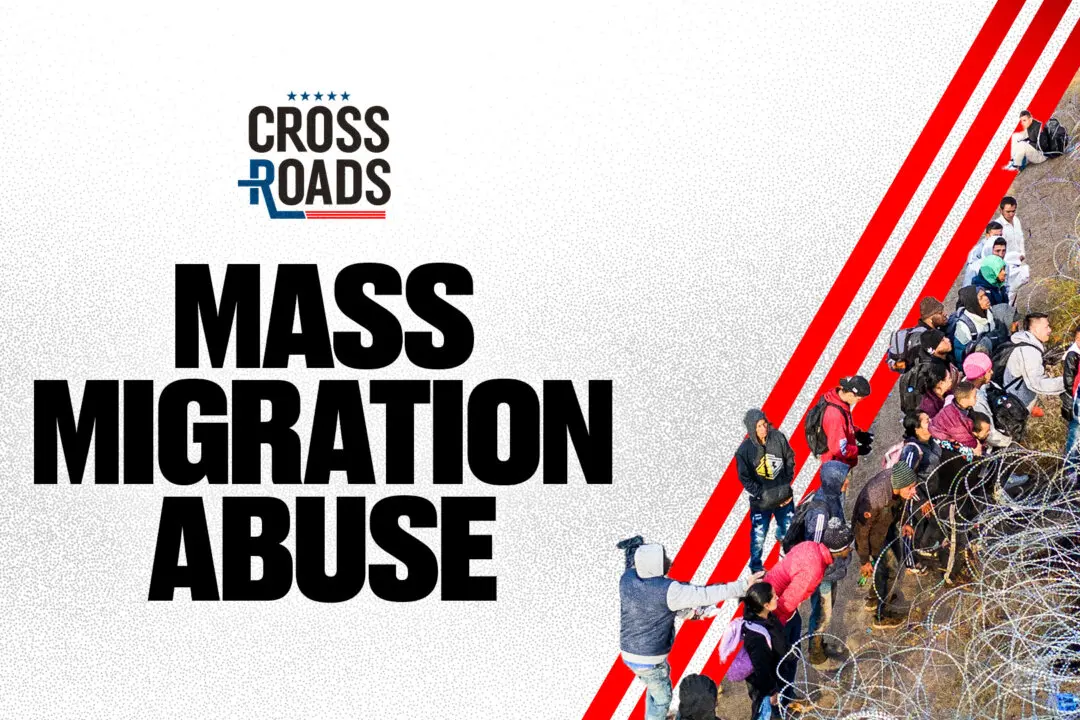Hate groups in the United States are steadily growing, with their numbers surpassing 1,000 for the first time in 2010.
The findings were compiled into an intelligence report, “The Year in Hate & Extremism, 2010,” by the Southern Poverty Law Center (SPLC), a nonprofit civil rights organization based in Alabama.
Whether fueled by racism or radical ideology, the growth and spread of hate groups has shown no sign of slowing. “I expected this very rapid kind of growth to slow down last year but it didn’t,” said Mark Potok, director of the Intelligence Project at the SPLC, author of the report, in a phone interview.
“It’s very likely to get worse before it gets better,” Potok said.
According to the SPLC, the number of hate groups began a steady rise in 2000, when there were 602 hate groups in the United States. SPLC defines a hate group as one focused on hatred of another group, most commonly another racial or ethnic group. Hate group numbers have steadily grown since 2000, and rose from 932 to 1,002 between 2009 and 2010.
The SPLC’s data shows a similar rise in nativist extremists against undocumented immigrants, as well as anti-government patriot groups and militias.
The number of anti-government patriot groups dwindled to 200 and fewer between 2000 and 2008, yet spiked in 2009. There are currently 824 anti-government patriot groups—up from just 149 in 2008. The number is at its highest since 1996.
“There are very large numbers of whites out there who are really angry and feel that they’ve lost their country,” Potok said.
“I think the primary thing driving the growth of these groups is the real anger of the changing racial demographics of this country,” he said, citing a U.S. Census Bureau prediction that whites will lose their majority status by 2050.
The rise of such groups also closely coincides with the election of President Barack Obama and the 2008 economic downturn.
According to the report, “What seems certain is that President Obama will continue to serve as a lightning rod for many on the political right, a man who represents both the federal government and the fact that the racial makeup of the United States is changing.”
The primary concern about the increase of hate and extremist groups is the risk of physical violence their ideologies can cause. The Oklahoma City bombing, which killed 168 people on April 19, 1995, was carried out by right wing extremist Timothy McVeigh.
The current climate is “getting to feel quite similar to the period and the run-up to Oklahoma City,” Potok said. “I’m not predicting another bombing, who could say, but it seems entirely possible.”
There were several foiled attacks in recent years. A neo-Nazi bound for the Arizona border and armed with dozens of homemade grenades was arrested in January, and the bombing of a Martin Luther King Jr. Day parade in Spokane, Wash., by an anti-government extremist was also foiled, according to the SPLC report.
The growing epidemic of hate and extremism on both sides of the political spectrum is being fueled largely by the Internet, which provides a forum for the groups to communicate and spread their message.
A 2009 report from the Jewish human rights organization, The Simon Wiesenthal Center (SWC), describes the extent of the problem. Hate and terror websites grew from just one in 1995 to 10,000 in 2009.
Although pages posted to websites such as Facebook and MySpace are typically removed once reported, the individuals behind the pages can have them reposted and back online within minutes.
“The Internet is great for communication, but also has a sinister side as well,” said Joe Kaufman, chair of Americans Against Hate, a civil rights organization and terrorism watchdog group, in a phone interview.
“As the Internet grows with things like Facebook, it’s easier for these groups to grow as well,” Kaufman said. “The Internet is for them the greatest thing that could happen.”
He referenced white supremacy website Stormfront, which brands itself as a “community of White Nationalists.” The website is a multilanguage message board that functions as a central meeting point for the global white supremacy movement.
“It seems like every white supremacy organization in the world has a base there within this organization where they can all communicate with one another,” Kaufman said.
Although both Kaufman and Potok note that it is unlikely all members of the hate and extremist organizations will turn to violence, they often provide the ideology and potential for individuals to do so.
“It only takes one to cause major damage in this country, and I think the imagery they use and the content they are using is extreme enough that something could happen with regard to them,” Kaufman said.
The findings were compiled into an intelligence report, “The Year in Hate & Extremism, 2010,” by the Southern Poverty Law Center (SPLC), a nonprofit civil rights organization based in Alabama.
Whether fueled by racism or radical ideology, the growth and spread of hate groups has shown no sign of slowing. “I expected this very rapid kind of growth to slow down last year but it didn’t,” said Mark Potok, director of the Intelligence Project at the SPLC, author of the report, in a phone interview.
“It’s very likely to get worse before it gets better,” Potok said.
According to the SPLC, the number of hate groups began a steady rise in 2000, when there were 602 hate groups in the United States. SPLC defines a hate group as one focused on hatred of another group, most commonly another racial or ethnic group. Hate group numbers have steadily grown since 2000, and rose from 932 to 1,002 between 2009 and 2010.
The SPLC’s data shows a similar rise in nativist extremists against undocumented immigrants, as well as anti-government patriot groups and militias.
The number of anti-government patriot groups dwindled to 200 and fewer between 2000 and 2008, yet spiked in 2009. There are currently 824 anti-government patriot groups—up from just 149 in 2008. The number is at its highest since 1996.
“There are very large numbers of whites out there who are really angry and feel that they’ve lost their country,” Potok said.
“I think the primary thing driving the growth of these groups is the real anger of the changing racial demographics of this country,” he said, citing a U.S. Census Bureau prediction that whites will lose their majority status by 2050.
The rise of such groups also closely coincides with the election of President Barack Obama and the 2008 economic downturn.
According to the report, “What seems certain is that President Obama will continue to serve as a lightning rod for many on the political right, a man who represents both the federal government and the fact that the racial makeup of the United States is changing.”
The primary concern about the increase of hate and extremist groups is the risk of physical violence their ideologies can cause. The Oklahoma City bombing, which killed 168 people on April 19, 1995, was carried out by right wing extremist Timothy McVeigh.
The current climate is “getting to feel quite similar to the period and the run-up to Oklahoma City,” Potok said. “I’m not predicting another bombing, who could say, but it seems entirely possible.”
There were several foiled attacks in recent years. A neo-Nazi bound for the Arizona border and armed with dozens of homemade grenades was arrested in January, and the bombing of a Martin Luther King Jr. Day parade in Spokane, Wash., by an anti-government extremist was also foiled, according to the SPLC report.
The Spread of Hate
The growing epidemic of hate and extremism on both sides of the political spectrum is being fueled largely by the Internet, which provides a forum for the groups to communicate and spread their message.
A 2009 report from the Jewish human rights organization, The Simon Wiesenthal Center (SWC), describes the extent of the problem. Hate and terror websites grew from just one in 1995 to 10,000 in 2009.
Although pages posted to websites such as Facebook and MySpace are typically removed once reported, the individuals behind the pages can have them reposted and back online within minutes.
“The Internet is great for communication, but also has a sinister side as well,” said Joe Kaufman, chair of Americans Against Hate, a civil rights organization and terrorism watchdog group, in a phone interview.
“As the Internet grows with things like Facebook, it’s easier for these groups to grow as well,” Kaufman said. “The Internet is for them the greatest thing that could happen.”
He referenced white supremacy website Stormfront, which brands itself as a “community of White Nationalists.” The website is a multilanguage message board that functions as a central meeting point for the global white supremacy movement.
“It seems like every white supremacy organization in the world has a base there within this organization where they can all communicate with one another,” Kaufman said.
Although both Kaufman and Potok note that it is unlikely all members of the hate and extremist organizations will turn to violence, they often provide the ideology and potential for individuals to do so.
“It only takes one to cause major damage in this country, and I think the imagery they use and the content they are using is extreme enough that something could happen with regard to them,” Kaufman said.




